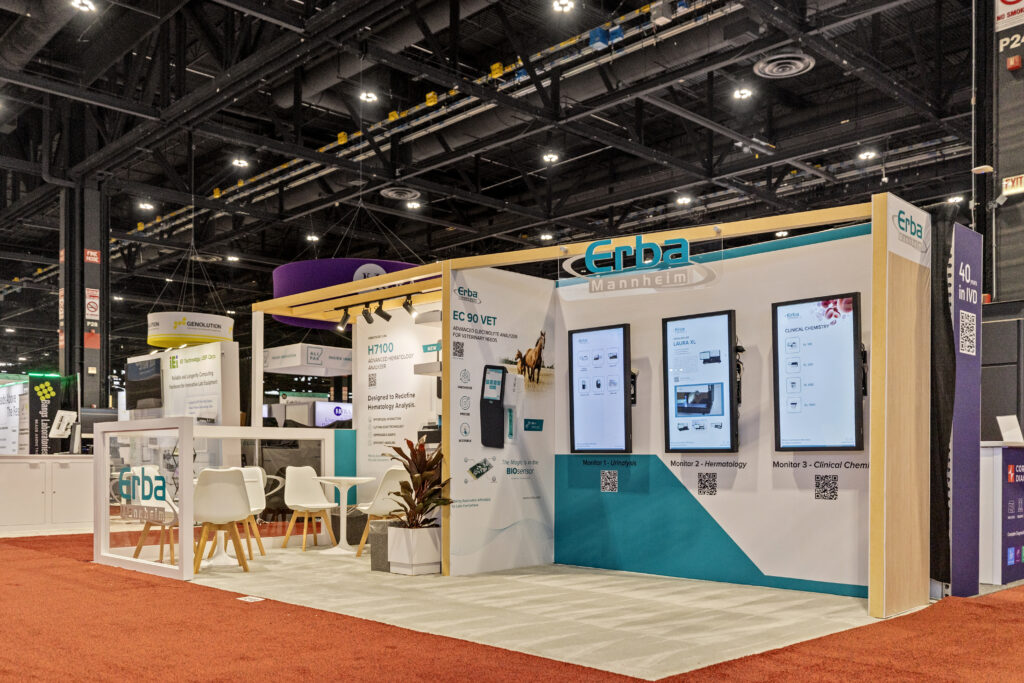
Every company needs its own solution. An exhibit display is a marketing tool designed to promote and support your brand. For some, a rental exhibit offers flexibility and savings. For others, ownership provides control and long-term value. Understanding the pros and cons of renting vs purchasing trade show exhibits helps you make the best choice.
The Case for Renting
Renting delivers impressive first impressions without the upfront financial burden of ownership. With a rental, you can present a fully customized space—complete with graphics, AV, furnishings, and flooring—while paying a fraction of the cost. Renting also allows you to adjust booth size and configuration from show to show, giving you more adaptability.
Cost savings are significant. Renting reduces upfront expenses by as much as 75% compared to buying. That frees budget for pre-show marketing, at-show promotions, and client events. In addition, rentals can be expensed immediately, while purchased exhibits depreciate over time. Finance programs also exist for single- or multi-show rental agreements, making rentals even more accessible.
The Case for Purchasing
Ownership comes with pride and permanence, but also responsibilities. The average exhibit lasts about five years. Refurbishment can cost 10–15% of the original price, and damages from shipping or floor incidents may drive that number higher. Owners must also handle storage, logistics, paperwork, and maintenance. Without a strong in-house team or a partner contract, those tasks quickly pile up.
When considering renting vs purchasing trade show exhibits, remember that the “wow factor” of a new booth usually lasts only a year or two before the design feels dated. At that point, refurbishment or replacement becomes necessary. And if you try to resell, used exhibits return only pennies on the dollar.
The Bottom Line
Renting vs purchasing trade show exhibits comes down to flexibility versus commitment. Renting keeps costs predictable and frees resources for marketing. Purchasing offers control and long-term use, but demands ongoing investment in upkeep, logistics, and storage. Evaluate your program size, budget, and staff resources before deciding. The right choice balances financial reality with branding goals.




